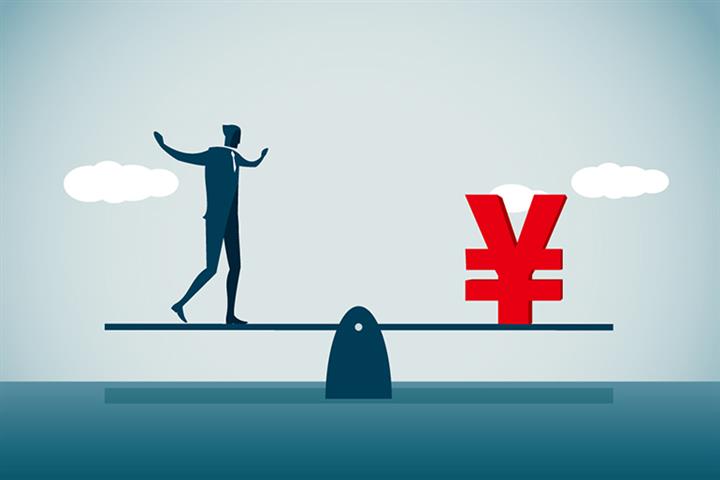 China’s Macro Leverage Ratio Could Start to Rise This Year, Think Tank Says
China’s Macro Leverage Ratio Could Start to Rise This Year, Think Tank Says(Yicai Global) Feb. 16 -- China’s macro leverage ratio, which is the ratio of the country’s total debt to its assets, could rebound this year after falling last year as increased borrowing helps underpin economic growth, a government think tank said.
This year’s macro leverage ratio could reach 268 percent, the Chinese Academy of Social Sciences said yesterday. Last year it dipped 6.3 percentage points from the year before to 263.8 percent as the economy recovered from the Covid-19 pandemic.
There are many factors which could hamper economic growth this year, Liu Lei, secretary-general of the Research Center for National Balance Sheet at National Institution for Finance and Development under CASS, told Yicai Global.
China is currently facing the triple pressures of shrinking demand, supply shocks and weakening expectations, he said. The Covid-19 pandemic remains the biggest uncertainty and intensified Sino-US competition has also amplified external restricting factors, while the domestic economy is facing structural transformation and an ageing population.
As a result, China’s macro leverage ratio may enter an upward cycle and the key factor influencing this trend is undoubtedly economic growth, he added.
China’s leverage ratio among non-financial companies fell 7.5 percentage points last year, making it the sector with the biggest decline, the report said. That of the household sector stayed at 62.2 percent, the same as the year before, while that of the government sector ticked up 1.2 percentage point to 46.8 percent.
There are three main reasons for the sharp drop in borrowing by non-financial businesses, Liu said. Firstly, companies’ intention to expand the scale of their production and operations was not strong and demand for loans was low. Secondly, many companies are not optimistic about the future despite swelling profits, and thirdly, banks are tightening credit lines.
The decline was mainly related to weakening financing needs of the real economy in the context of the slowdown in economic recovery, a macro economic analyst told Yicai Global. Policies curbing the real estate market and urban investment also restricted borrowing.
However, with strengthening government support and better expectations, companies will hopefully start to spend more and the leverage ratio may maintain an upward trend in 2022, he added.
Editors: Tang Shihua, Kim Taylor